GV Anthropology News
Alumni Updates
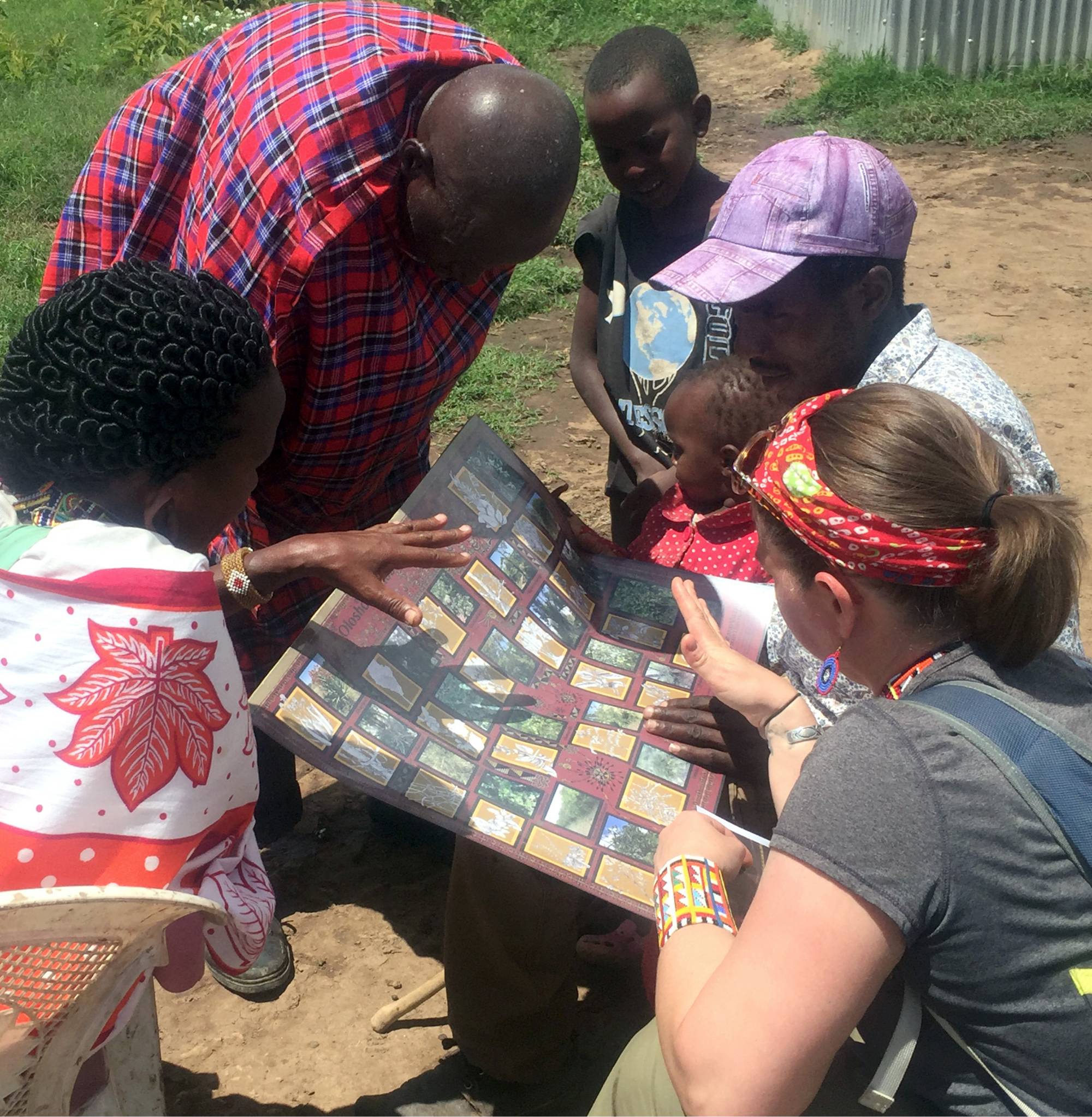
Cover Photo: Dr. Kristin Hedges reviews medical plants used by the Maasai people of East Africa.
Learn more about the project - opposite page
Learn more about Dr Hedges - here
Credit: Dr. Kristin Hedges (Grand Valley Lanthorn)
New Certificate in Applied Anthropology
By Tara Hefferan, [email protected]
As a discipline, anthropology offers a powerful set of concepts and skills to solve real world problems. Students can now demonstrate their ability to put anthropology to practical use through a new credential option at GVSU, the Certificate in Applied Anthropology (CAA). The certificate is open to students across the university, including anthropology majors and minors, and requires study of ethnographic methods and applied anthropology, as well as completion of an intensive 6-credit internship. The CAA is designed to be personalized, as students pursue their specific interests through more than 30 elective options across 13 different disciplines.
In this issue, four of our current CAA students introduce themselves and talk about their interests in applied anthropology. Alex Baker and Daniel O’Leary are pre-internship students, while the Andra Durham and Alex Norris have completed their internship experiences.
Anthropologists in the Field - Summer 2018
Dr. Kristin Hedges
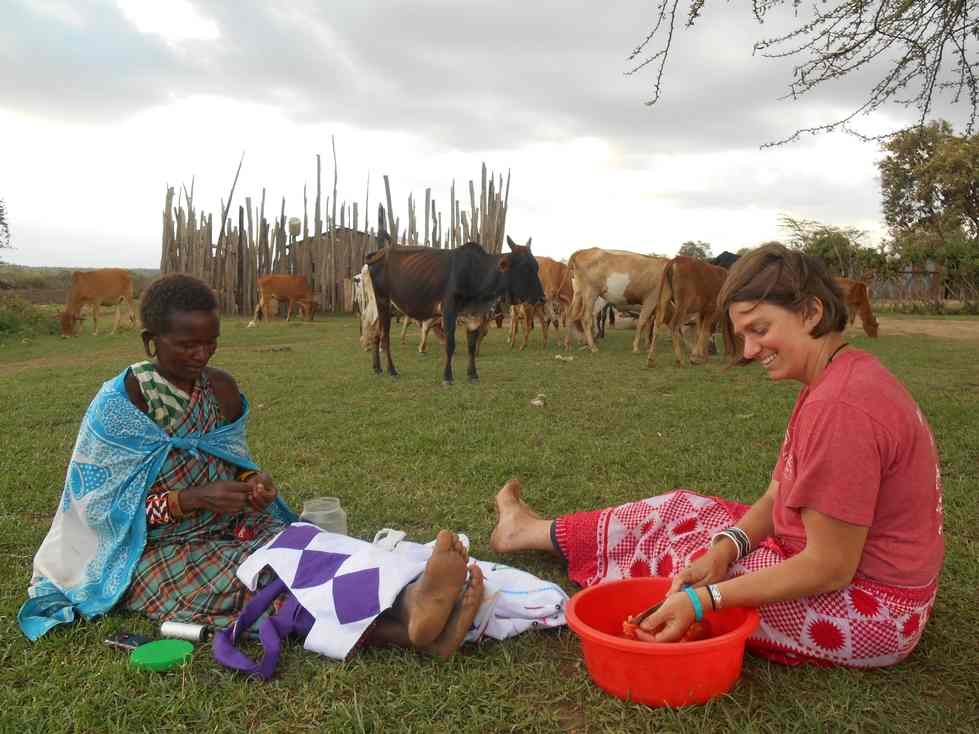
From the cover: Medicinal plants play a crucial role as ‘first aid’ in the health care needs of indigenous communities throughout the world. In East Africa, the Maasai are a well-known pastoral society whose traditional ecological knowledge of local herbs has supplied many of the healing properties needed for typical household health concerns. However, this component of heath care is currently threatened. Due to the rapid spread of urbanization, land loss, exploitation, and mismanagement, the use of traditional ecological knowledge (TEK) in the community is decreasing. The Olosho Ethnobotany Project, under the direction of Dr. Kristin Hedges, is run out of the GVSU Anthropology Department. In partnership with the National Museums of Kenya and the Olosho Initiatives community-based organization, this project aims to document and preserve medicinal plant knowledge among the Maasai tribe in Kenya. This multi-year project was launched in the summer of 2017.
Dr. Mark Schwartz
This past summer and fall I was working on my underwater research in Reeds Lake. I started to use a small ROV to take video of the wreck of the Hazel A., built in 1894. I started to learn how to use photogrammetry software so that I can create a 3D model of the shipwreck. I am also conducting historical research on the steamboats that worked on Reeds Lake in the late nineteenth/early twentieth centuries.
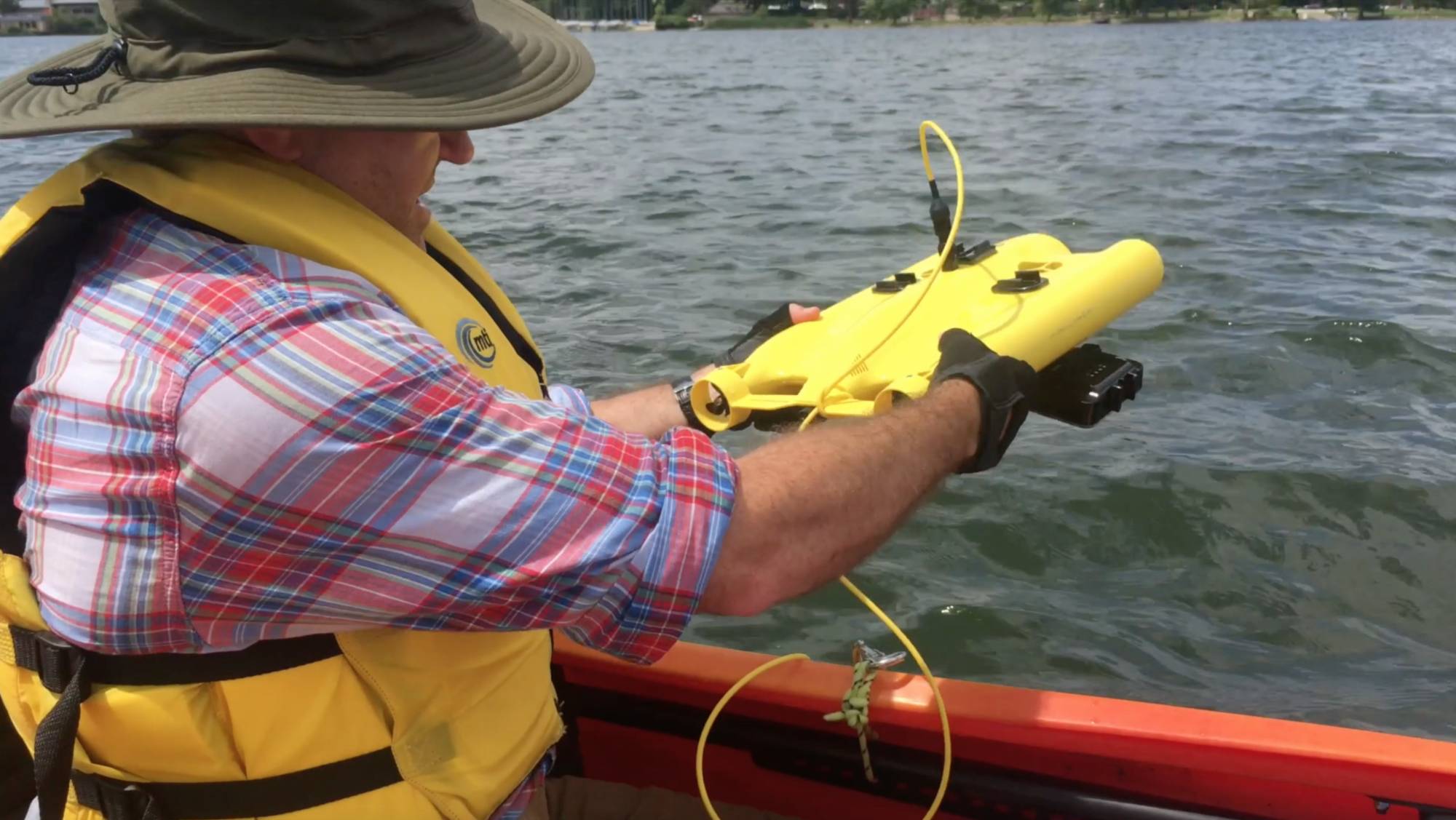
Faculty Spotlight
“Above and Below the Maya Forest” published in Science - Dr. Sherman Horn
I was back in Mesoamerica from May – mid-July last summer for a very successful field season. Our continuing archaeological survey of the ancient Maya city El Pilar – aided by detailed LiDAR imagery, handheld GPS units, Geographic Information Systems mapping software, and old-fashioned survey experience – yielded new insights into how the Maya engineered their landscape. Our small team of surveyors covered nearly 2.5 square kilometers of dense tropical forest in the areas outside the city center, which would have been impossible using traditional survey methods alone. The increasing availability of LiDAR has been a boon to Maya archaeologists who study ancient human-environment interactions in the tropics, and we have put the technology to good use, recording more than 500 new cultural features in 2018 alone. Over half of these features were smaller mounds arranged into groups – the houses of the ancient city’s inhabitants – and we’re beginning to get a sense of clustering that may reflect distinctive neighborhoods. We’ve also discovered several strange features we’re calling berms – linear, curvilinear, or amorphous piles of stone, which may relate to water management, erosion control, or something else entirely. Whatever their function, the berms demonstrate the extent of environmental engineering the ancient Maya undertook around their city centers.
I had the opportunity to present my research at two conferences over the summer: the International Symposium on Archaeometry (ISA) in Merida, Mexico, and the Belize Archaeological Symposium (BAS) in San Ignacio, Belize. The ISA is a biennial conference where leading researchers present on the application of scientific techniques to archaeological problems, and I was honored to give a paper on LiDAR that opened the Remote Sensing section of the symposium. The BAS is a “local” conference that brings together researchers working across Belize to present findings to their colleagues. Both of these conferences showcased our work with LiDAR and survey in the tropical Maya forest, and each was a wonderful venue to establish new connections with researchers. Our work will be published in peer-reviewed journals with other proceedings from these conferences.
One final note on our work with LiDAR: Dr. Anabel Ford and I have recently published a short Perspective article in the journal Science, which accompanies a larger piece describing recent discoveries with LiDAR across a large swath of lowland Guatemala. Science is a prestigious venue for publication, and we were accordingly happy to have our contributions recognized in this field of study.
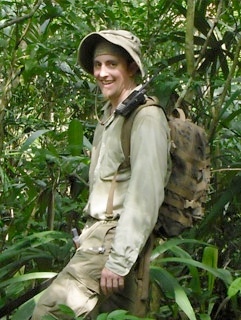
New faces in the Department
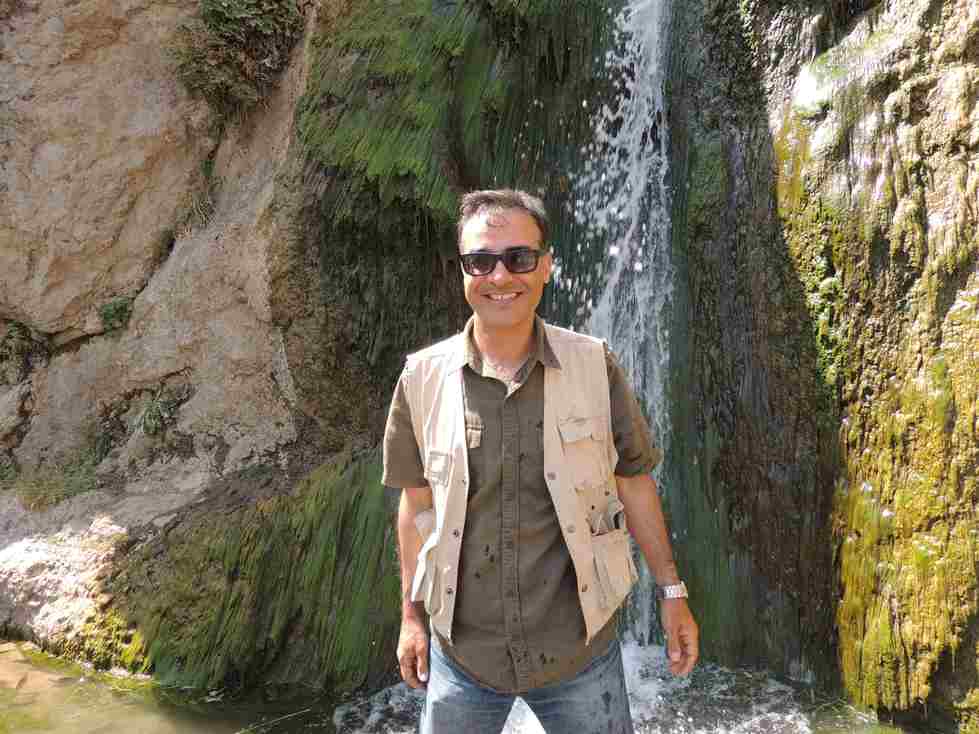
Dr. Karim Alizadeh, visiting professor
Hello! I am an anthropological archaeologist. Since 2002, I have directed eleven research teams in Iranian Azerbaijan. My early research concentrated on the imperial landscapes of the Sasanian Empire in late antiquity. The studies included borderland economy and border policies and their impact on landscapes using field survey and satellite remote sensing techniques. From 2012 to 2014 I directed a team of researchers working at an Early Bronze Age site, Köhne Shahar, in Iranian Azerbaijan. The post-excavation studies of this project are ongoing and our team is working on publication of results from the first round of fieldwork. In this ongoing project, I use empirical data to investigate the rise of late prehistoric complex societies and early urbanism on the highland fringes of Southwest Asia particularly in the Caucasus region. The focus of my research is the study of social inequality, socio-political institutions, and craft production and specialization.
Jamie Hedges, adjunct professor
I’m a writer and educator, focusing on local communities, outdoor recreation, and environment. My interdisciplinary master’s is in anthropology, ethnic studies, and natural resources. I’ve been an educator since 2001. I focus on Environmental Issues, non-Western Cultures, World Religion, as well as sex, gender, and sexuality. My background includes graphic design, psychology, team building, creative writing, and experiential education. I’ve traveled in 48 of the States and to the Colombian Amazon, Maasailand, Ho Chi Minh City, Mexico, and Ireland. As an organizational anthropologist, I help nonprofits to develop their digital storytelling.
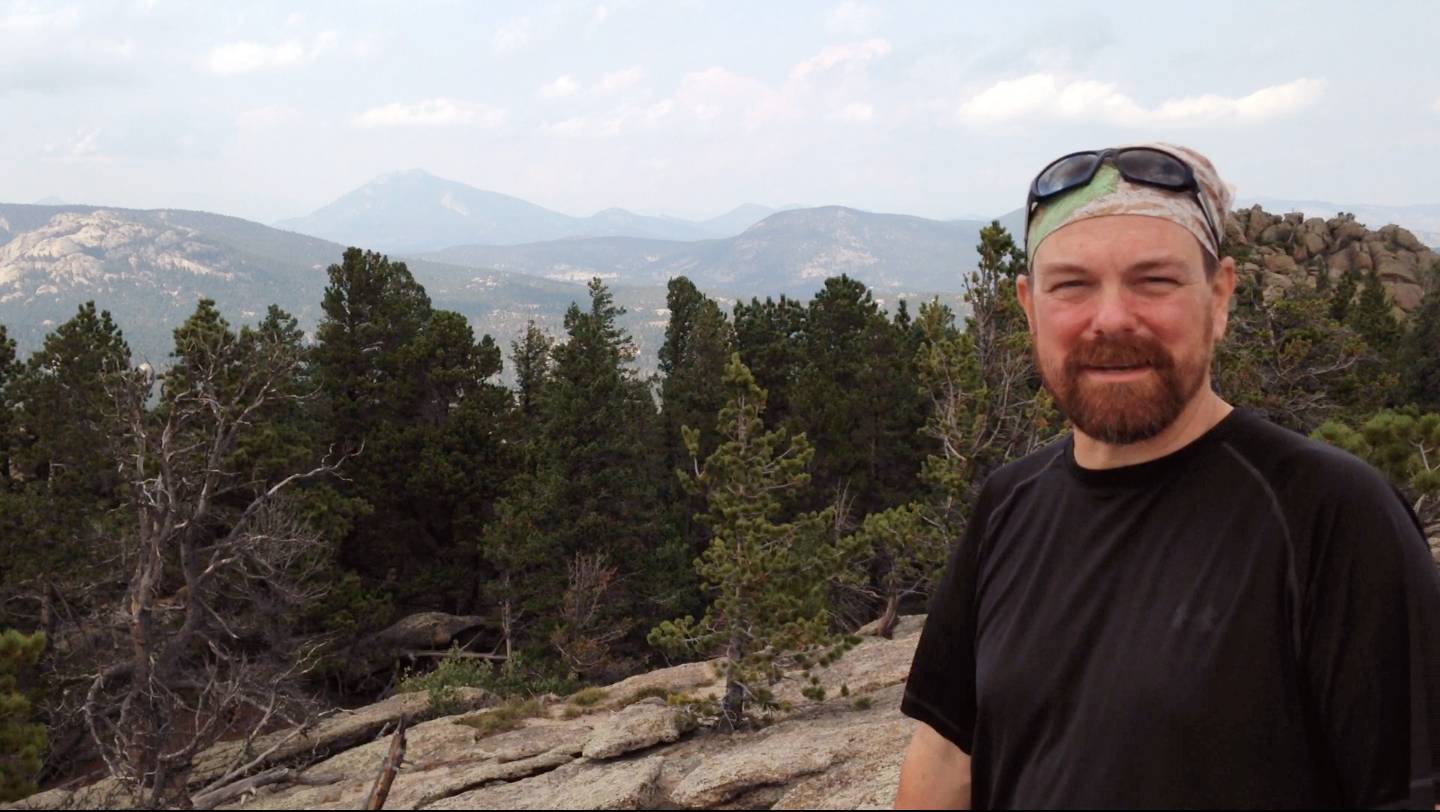
Civil Discourse Symposium
Faculty, staff and students joined a panel of experts to discuss climate change with Dr. Elizabeth Arnold, associate professor of anthropology and the Padnos/Sarosik endowed professor of civil discourse last October. The 5th Annual Padnos/Sarosik Civil Discourse Symposium: Civil Conversations on Climate Change Three panelists representing various views on climate change were Jordan Chrispell, West Michigan Clean Energy Organizer for the Sierra Club’s Michigan Chapter, Steve Goreham, author and Executive Director of the Climate Science Coalition of America, and Kelly Parker, professor of philosophy and Director of the Environmental Studies program at GVSU. Attendees were then invited to practice civil discourse in roundtable discussions which were facilitated by hosts and focused on a unique climate change issue.
Right: Dr. Elizabeth Arnold during the Civil Conversations on Climate Change symposium. Credit: Bird + Bird Studio
[1555607693].jpg)
Laker Anthropologist for a Lifetime!
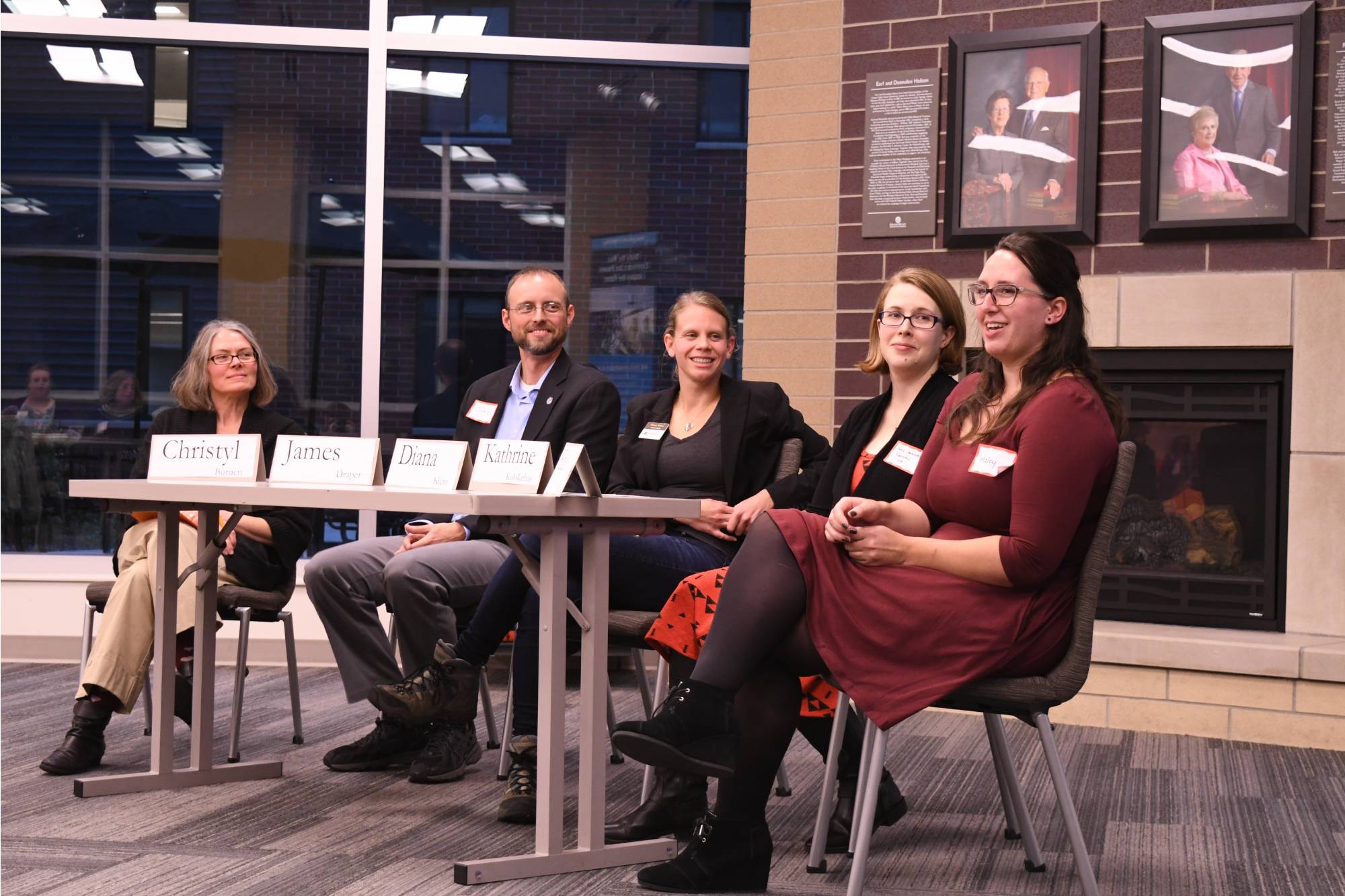
This fall, GVSU Anthropology hosted the 2018 Student-Alumni Mixer. This fun event brought together anthropology alumni, current students, and faculty around the theme of careers in anthropology. With support from a GVSU Career Center Mini-Grant, the event balanced informal conversations with a moderated panel of five distinguished GVSU Anthropology alumni sharing their their diverse work experiences. Panelists James (Jamie) Draper, 1999, Christyl Burnett, 1998, Haley Scott, 2012, Diana Klein, 2009, and Kathrine (Katie) Kolokithas, 2009 used story telling, personal and professional experiences, and reflections on anthropology to emphasize how the skills that anthropologists hold can be used to forge a range of professional careers. The panelists uniformly emphasized the importance of getting work experience—especially in the form of internships—while still a student. Two current students, Andra Durham and Alex Norris, also made presentations on how their recent internships complemented their classroom experiences, allowing them the opportunity to bring their skillsets into the local community.
The Mixer was a great success, creating space for students and alumni to learn from one another and to expand their professional networks. We hope to host more of these kinds of events, so if you are an alumni who would be interested in sharing your insights and experiences with current students, please get in touch with me. We would love to hear from you.
Past Featured Alumni
Teague O'Mara
Dr. O’Mara graduated with undergraduate degrees in Anthropology and Biology and completed the Honors College at GVSU in 2001. He then worked as the field director for the Semliki Chimpanzee Project in Uganda where he re-started research efforts after a civil war induced hiatus. After brief stints teaching university students primate ecology in Costa Rica and high schoolers in Michigan how to make TV shows, he earned M.A. (2005) and Ph.D. (2012) degrees in Biological Anthropology at Arizona State University. His work on the development and ecology of lemurs in Madagascar earned him grants from the National Science Foundation and the Fulbright Foundation, among others, and the American Association of Physical Anthropologists awarded him the Sherwood Washburn student prize. Teague has earned postdoctoral fellowships from the Smithsonian Tropical Research Institute in Panama, and the European Union’s Marie Skodowska-Curie fellowship for his work on social learning, cooperation, and physiology in bats. Teague’s research in primates and bats focuses on how animals learn to be part of a social group as they develop, how males and females differ in their development, why certain animals have long juvenile periods, and what these questions tell us about development and learning in humans. He is currently a postdoctoral fellow at the Max Planck Research Institute for Ornithology in Radolfzell, Germany where he teaches and conducts research, but also spends some time thinking about how lucky he is to study amazing animals in some great places around the world.
Lisa Rose Starner
Starner's writings and her foraging skills have been featured in local publications including Rapid Growth Media, Solace Magazine, Women's Lifestyle Magazine, Shore Magazine, and in The Rapidian. Her first book, Grand Rapids Food: A Culinary Revolution, is now available by The History Press (Charleston, SC) and Starner has completed two additional books, Midwest Foraging: 115 Wild and Flavorful Edibles from Burdock to Wild Peach, and Midwest Medicinal Plants: identify, Harvest, and Use 109 Wild Herbs for Health and Wellness, through Timber Press. With a background in anthropology and professional focus on community health, Starner has gathered her food, farming and wild plant knowledge from many people and places along a very delicious journey. Growing up in Michigan only a handful of few minutes from the magical dunes and shoreline of the Big Lake, Starner first learned the art and pleasure of eating while a university student in Nice, France. After university, her edible journey took her to work in the Stags Leap District of Napa Valley and to volunteer at Alice Waters’s Edible Schoolyard in Berkeley, California. It was at the Edible Schoolyard where Starner witnessed the power of growing gardens with children and the impact it can have on their health, the environment and the future of our global food system. Starner returned to Michigan from the Bay Area in 2001 and has since been an activist in her local food community writing, teaching and getting her own hands dirty in the soil to help grow the local food movement with her family in Grand Rapids, Michigan.

